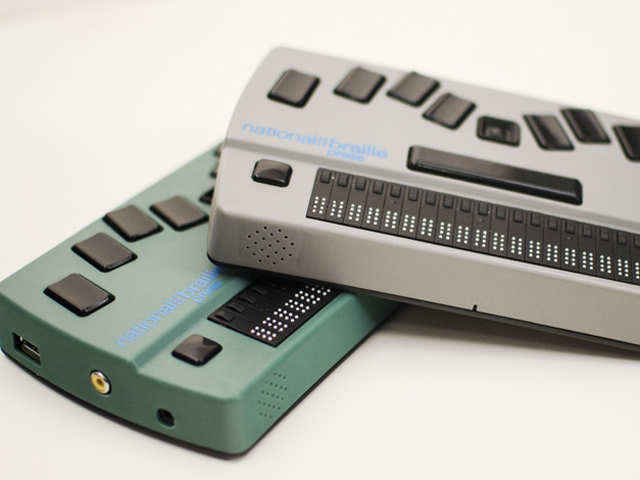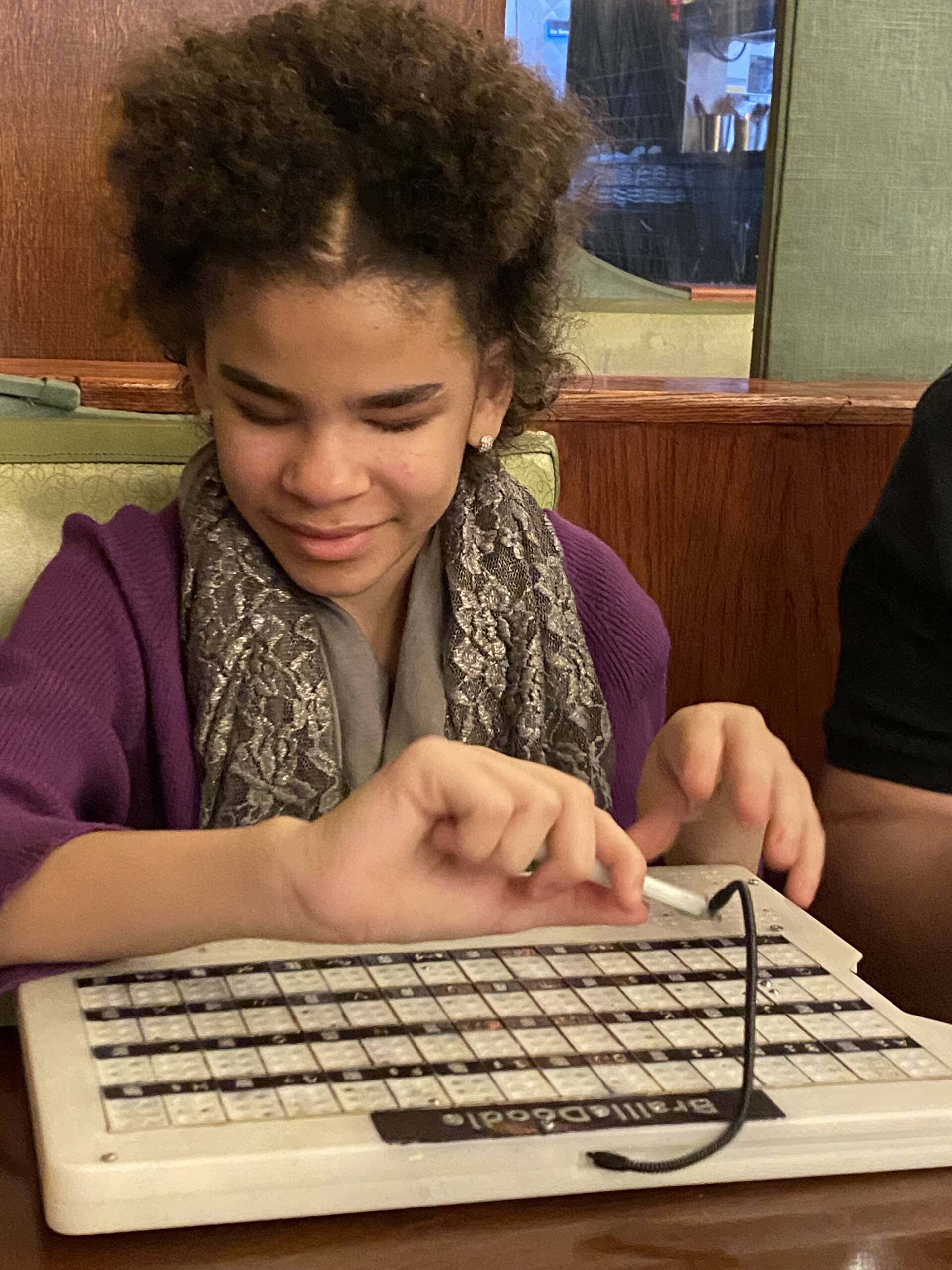OCR Devices for the Blind: Turning Print to Speech in Real-Time
OCR Devices for the Blind: Turning Print to Speech in Real-Time
Blog Article
Discover Innovative Tools Made for the Aesthetically Impaired
The development of innovative tools for the visually damaged stands for a significant development in ease of access and independence. Technologies such as smart glasses with AI capacities and mobile applications designed to offer acoustic summaries are improving daily experiences for users.
Smart Glasses for Navigation

Smart glasses made for navigation are transforming the way aesthetically damaged people engage with their atmosphere. These sophisticated devices utilize a mix of video camera innovation, expert system, and auditory feedback to provide real-time details about environments. By utilizing obstacle discovery systems, clever glasses can signal users to prospective hazards, making it possible for safer wheelchair in both unknown and familiar setups.
The assimilation of GPS innovation better improves navigating capabilities, allowing users to receive acoustic instructions as they relocate. This hands-free technique not only fosters independence but also encourages aesthetically impaired individuals to browse metropolitan landscapes with raised self-confidence. Furthermore, lots of wise glasses are outfitted with functions that determine sites and road signs, giving contextual details that enhances the customer experience.
Moreover, the development of these gadgets is constantly progressing, with companies functioning to boost the accuracy of things recognition and increase the variety of navigational functions. As smart glasses become much more easily accessible and affordable, they hold the potential to significantly transform life for aesthetically damaged users. Ultimately, these innovative tools represent a critical step towards inclusivity, offering boosted wheelchair and a better feeling of freedom for individuals navigating the globe around them.

Mobile Application for Daily Living
How can mobile applications boost the day-to-days live of visually damaged people? Mobile applications are changing the method visually impaired customers navigate their settings, take care of everyday tasks, and gain access to information. These applications supply crucial assistance via different capabilities, promoting independence and enhancing quality of life.
Several ingenious mobile apps are designed especially for everyday living. Apps like Be My Eyes attach aesthetically impaired users with sighted volunteers through video calls, allowing them to get real-time support with tasks such as checking out labels or browsing unknown rooms. Seeing AI, developed by Microsoft, utilizes fabricated intelligence to describe surroundings, reviewed message, and determine things, properly changing a smartphone into an effective tool for day-to-day support.
In addition, navigation applications customized for the visually damaged, such as Aira and BlindSquare, supply audio-based instructions and ecological info, allowing users to traverse their environments safely and with confidence. Beyond navigation and immediate aid, mobile apps additionally support company and task monitoring, with features that assist individuals set pointers, produce order of business, and track consultations. In recap, mobile applications offer as essential sources, equipping visually damaged individuals to lead more independent and fulfilling lives.
Wearable Technologies for Assistance
Empowerment via technology is progressively apparent in the realm of wearable tools developed to assist visually damaged people. These innovative devices incorporate flawlessly right into life, boosting navigating and offering crucial feedback to customers. Wise glasses geared up with video cameras can review and identify faces message aloud, allowing users to communicate more confidently in specialist and social settings.
One more remarkable improvement is making use of haptic feedback systems in wearable tools. These systems utilize vibrations or various other responsive signals to convey details about the customer's environment, such as obstacles or changes in terrain, enhancing flexibility and safety and security. Wearable innovations also consist of wristbands that link to smart devices, informing customers to notifications through subtle resonances, hence boosting connectivity without reliance on visual signs.
As these innovations remain to progress, they are not only enhancing self-reliance for aesthetically impaired people yet likewise fostering a higher sense of addition in society. By connecting the gap in between obstacles dealt with in everyday living and the possibility for freedom, wearable technologies act as essential tools in the mission for equal rights and empowerment for those with visual problems.
Sound Summary Devices
Audio summary tools play an important duty in boosting accessibility for aesthetically damaged people, offering them with the ability to involve with aesthetic media. Voice-activated assistive devices. These tools use narrated summaries of essential visual aspects in films, television shows, and live performances, making certain that individuals can fully comprehend the context and feelings communicated via visuals
Sound summary can be incorporated right into different platforms, including streaming solutions, cinema testings, and live theater. Many prominent streaming services currently include audio summary as an accessibility attribute, permitting customers to choose it conveniently. In enhancement to traditional media, specialized applications likewise exist, giving audio summaries for art exhibitions, museums, and other cultural occasions.
The performance of audio description hinges on the ability of the storytellers, that must convey visual information succinctly without diminishing the initial audio. Technologies in this area are additionally leading the way for more personalized experiences, where individuals can adjust the degree of detail and pacing according to their choices.
Braille Innovations and Tools
Braille tools and innovations have significantly changed the method he said visually damaged individuals communicate with message and info. Modern improvements have actually brought about the development of flexible tools that improve proficiency and independence among individuals. Especially, Braille show technologies have actually developed, permitting vibrant analysis experiences. These devices transform electronic text right into Braille, allowing customers to access a substantial array of information on smartphones, computers, and tablet computers.
Moreover, mobile Braille notetakers incorporate typical Braille input with contemporary functionalities, assisting in note-taking, organizing, and document modifying on the move. Smart glasses for the visually impaired. These portable gadgets usually include text-to-speech abilities, bridging the space between Braille and auditory information
Additionally, ingenious Braille printers have actually arised, enabling users to generate Braille labels, records, and instructional materials efficiently. This availability promotes greater involvement in academic and specialist settings, eventually promoting inclusivity.
Moreover, research right into wise Braille modern technologies proceeds to increase. Devices that integrate man-made knowledge are being discovered to give real-time navigating help and contextual info, enhancing the user experience in varied settings. On the whole, these innovations reflect a commitment to empowering visually damaged people via technology, ensuring they can quickly access and involve with the world around them.

Verdict
The development of ingenious devices for the visually damaged dramatically enhances self-reliance and quality of life. These additional hints modern technologies not only foster higher inclusion but likewise promote freedom in daily tasks, inevitably contributing to a more available and fair culture for aesthetically impaired people.
As wise glasses end up being more easily accessible and economical, they hold the prospective to considerably transform day-to-day life for visually impaired users. Mobile apps are changing the way visually impaired individuals navigate their settings, manage day-to-day jobs, and accessibility why not look here information. Applications like Be My Eyes link visually impaired users with sighted volunteers through video clip telephone calls, permitting them to obtain real-time support with jobs such as reading labels or navigating strange rooms.Additionally, navigation applications tailored for the aesthetically impaired, such as Aira and BlindSquare, use audio-based instructions and ecological details, making it possible for customers to traverse their surroundings securely and confidently.The advancement of cutting-edge devices for the visually impaired significantly improves freedom and quality of life.
Report this page